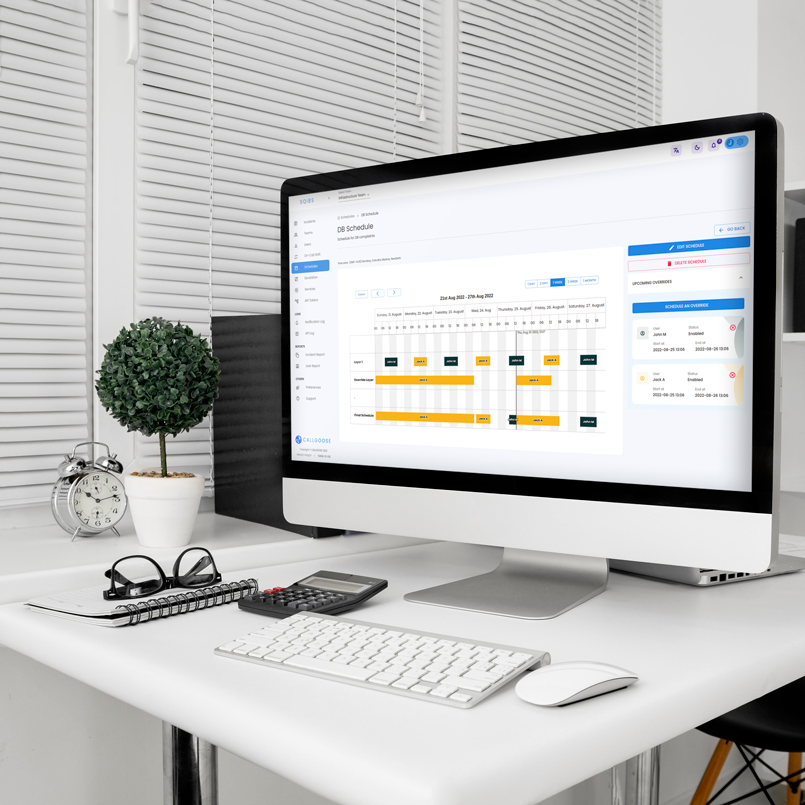Integrations
HubSpot
Integration of HubSpot with Callgoose SQIBS
Overview
This document provides a detailed guide to integrating HubSpot with Callgoose SQIBS to support Event-Driven Automation, Lead or Ticket-based Auto Remediation, and customer workflow automation. This integration allows HubSpot to send ticket, contact, or form submission events to Callgoose SQIBS using webhooks, which then trigger automation workflows. After the automation completes, the results can be logged or updated back into HubSpot.
Prerequisites
- HubSpot Account: Admin access to configure workflows, custom webhooks, and private apps for API authentication.
- Callgoose SQIBS Account: Permissions to create API filters and define automation workflows.
- Callgoose API Token and Endpoint: Required to receive and process webhook data.
1. Obtain API Token and Endpoint Details in Callgoose SQIBS
1.1 Generate API Token:
1.2 Find API Endpoint:
2. Configure HubSpot to Send Webhook Events to Callgoose SQIBS
2.1 Create a Workflow in HubSpot
- Go to https://app.hubspot.com and log in with an admin account
- Navigate to Automation > Workflows
- Create a new workflow (e.g., based on ticket creation or form submission)
- Set your trigger (e.g., “Ticket is created”, or “Form submitted”)
- In the Actions, choose Trigger a Webhook
- Set up webhook configuration:
- Webhook URL: https://<your_callgoose_instance>/sqibs/integration_endpoint
- Request Type: POST
- Headers (optional):
Content-Type: application/json Authorization: Bearer <token_if_required>
- Payload Example:
{
"ticket_id": "{{ticket.id}}",
"subject": "{{ticket.subject}}",
"description": "{{ticket.description}}",
"priority": "{{ticket.priority}}",
"email": "{{ticket.contact.email}}"
}
- Save and activate the workflow
3. Configure Callgoose SQIBS to Process HubSpot Events
3.1 Create API Filters
- Log in to Callgoose SQIBS
- Navigate to API Filters
- Add a new filter based on the structure of HubSpot’s webhook payload
Example:
- Payload JSON Key: priority
- Key Value Contains: ["High"]
- Map Incident With: ticket_id
- Incident Title From: subject
- Incident Description From: description
3.2 Run Automation Workflows
- Trigger automation based on the incident using available runners (Ansible, Shell, Python, PowerShell, etc.)
- Implement logic to remediate the issue described in the incoming request
4. Update HubSpot from Callgoose SQIBS (Optional)
4.1 Create a Private App in HubSpot
- Navigate to Settings > Integrations > Private Apps
- Create a new private app and generate an access token
- Use the access token to authenticate API requests from Callgoose
4.2 HubSpot API Call Example
- Endpoint to Update Ticket:
PATCH https://api.hubapi.com/crm/v3/objects/tickets/<ticket_id>
- Headers:
Content-Type: application/json Authorization: Bearer <access_token>
- Body Example:
{
"properties": {
"hs_ticket_status": "closed",
"latest_resolution_note": "Resolved by Callgoose SQIBS automation."
}
}
5. Testing and Validation
- Trigger the HubSpot workflow by creating a test ticket or form submission
- Confirm that the webhook is sent and received by Callgoose SQIBS
- Check that an incident is created and the automation runs
- If configured, verify that the HubSpot ticket status is updated
6. Troubleshooting
- Use the webhook execution logs in HubSpot to confirm request delivery
- Check API logs in Callgoose SQIBS to debug payload issues
- Validate API token and endpoint used for callbacks or ticket updates
- Review automation runner logs for script-level errors
7. References
- HubSpot Webhook Actions
- HubSpot API Reference
- Callgoose SQIBS API Token Documentation
- Callgoose SQIBS API Endpoint Documentation
- API Filter Instructions and FAQ
- How to Send API

